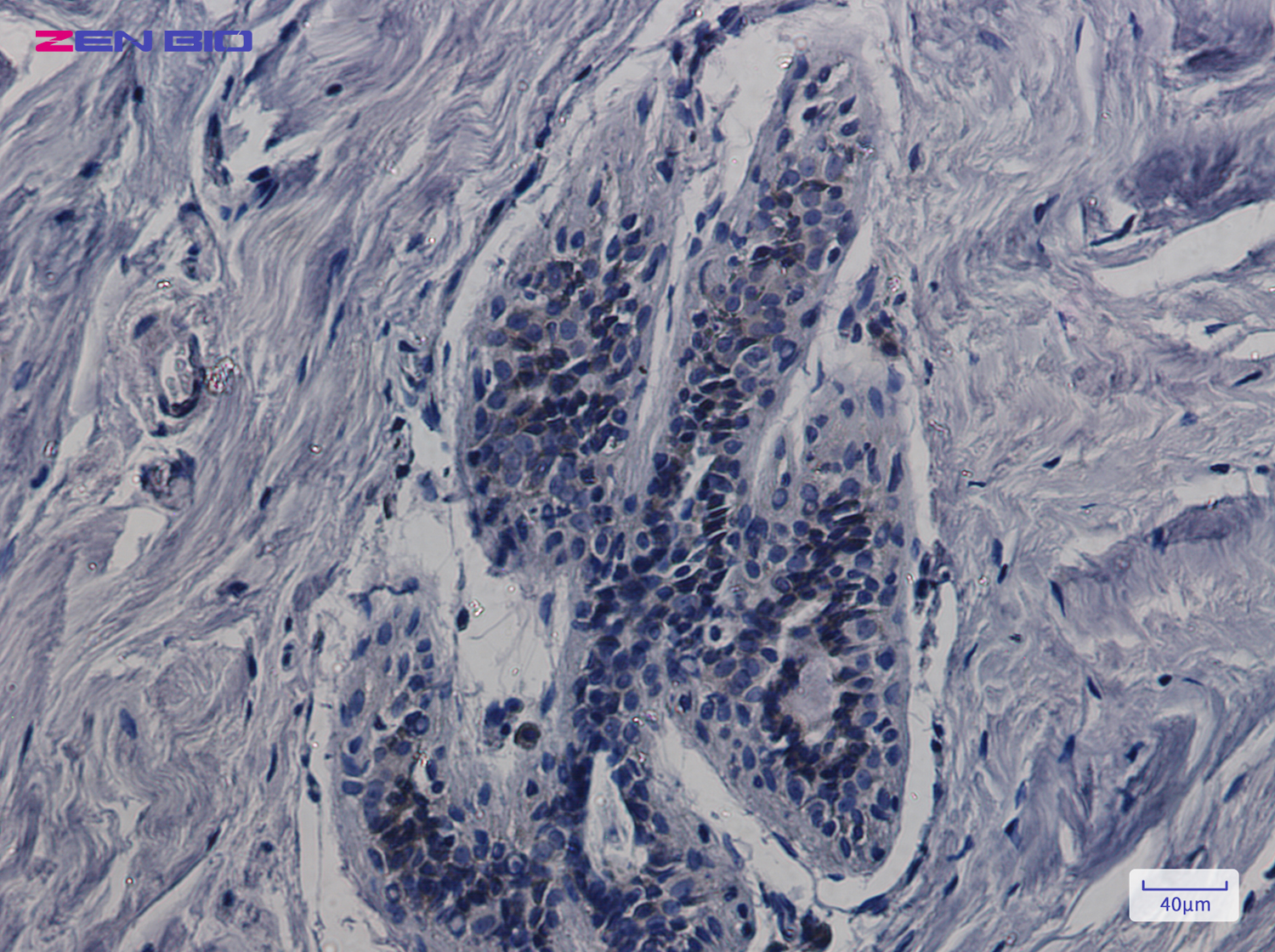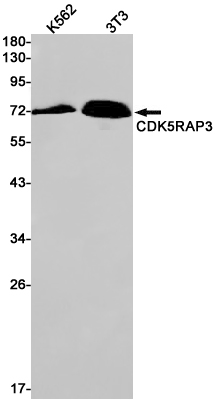-
Product Name
Anti-CDK5RAP3 Rabbit antibody
- Documents
-
Description
CDK5RAP3 Rabbit polyclonal antibody
-
Tested applications
WB, IHC-P, FC, IP
-
Species reactivity
Human, Mouse
-
Isotype
Rabbit IgG
-
Preparation
Antigen: A synthetic peptide of human CDK5RAP3
-
Clonality
Polyclonal
-
Formulation
Supplied in 50nM Tris-Glycine(pH 7.4), 0.15M Nacl, 40%Glycerol, 0.01% sodium azide and 0.05% BSA.
-
Storage instructions
Store at -20°C. Stable for 12 months from date of receipt.
-
Applications
WB: 1/1000
IHC: 1/20
FC: 1/20
IP: 1/20
-
Validations

Immunohistochemistry of CDK5RAP3 in paraffin-embedded Human breast cancer tissue using CDK5RAP3 Rabbit pAb at dilution 1/100

Western blot detection of CDK5RAP3 in K562,Hela cell lysates using CDK5RAP3 Rabbit pAb(1:1000 diluted).Predicted band size:57kDa.Observed band size:70kDa.
-
Background
Swiss-Prot Acc.Q96JB5.Probable tumor suppressor initially identified as a CDK5R1 interactor controlling cell proliferation (PubMed:12054757, PubMed:12737517). Negatively regulates NF-kappa-B-mediated gene transcription through the control of RELA phosphorylation (PubMed:17785205, PubMed:20228063). Also regulates mitotic G2/M transition checkpoint and mitotic G2 DNA damage checkpoint (PubMed:15790566, PubMed:19223857). Through its interaction with CDKN2A/ARF and MDM2 may induce MDM2-dependent p53/TP53 ubiquitination, stabilization and activation in the nucleus, thereby promoting G1 cell cycle arrest and inhibition of cell proliferation (PubMed:16173922). May play a role in the unfolded protein response, mediating the ufmylation of multiple proteins in response to endoplasmic reticulum stress (PubMed:23152784). May also play a role in the rupture of the nuclear envelope during apoptosis (PubMed:23478299). May regulate MAPK14 activity by regulating its dephosphorylation by PPM1D/WIP1 (PubMed:21283629).
Related Products / Services
Please note: All products are "FOR RESEARCH USE ONLY AND ARE NOT INTENDED FOR DIAGNOSTIC OR THERAPEUTIC USE"
